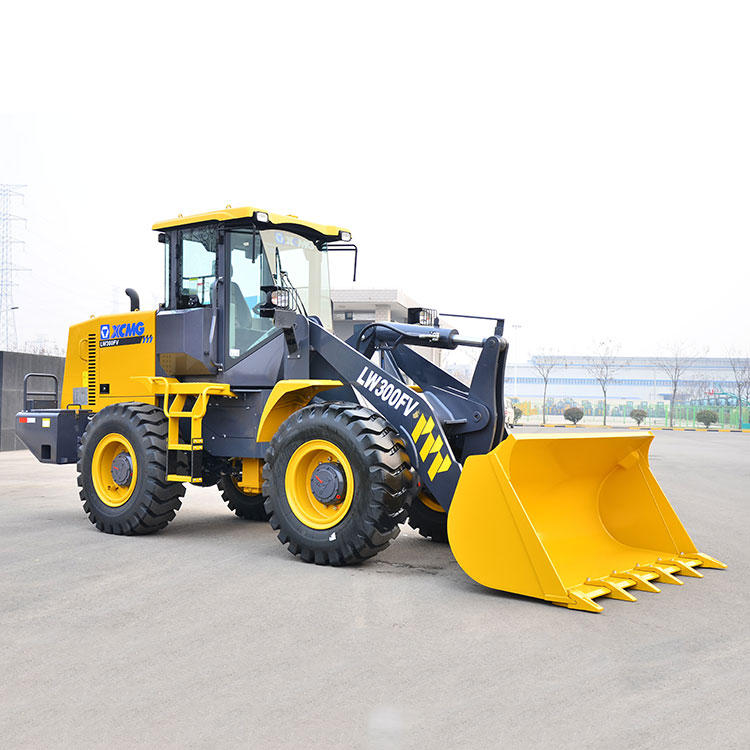Why is the Wheel Loader an Essential Piece of Construction Equipment?
2025-01-08
When it comes to heavy-duty construction and mining tasks, the wheel loader stands out as one of the most versatile and essential pieces of equipment. But what makes it so indispensable in various industries? In this blog, we will explore the role of the wheel loader, its functionality, and why it is crucial for smooth operations in construction sites, quarries, and even agricultural fields.
What is a Wheel Loader?
A wheel loader, also known as a front loader or a bucket loader, is a powerful machine primarily used for scooping, lifting, and transporting materials. Its defining feature is the large, front-mounted bucket that can be raised or lowered using hydraulic arms. The wheel loader is typically designed with rubber tires, which makes it more mobile than its tracked counterparts, such as bulldozers.
Wheel loaders are equipped with a wide range of attachments, including forks, buckets, and grapple arms, making them highly adaptable for different tasks. From lifting heavy materials like soil, gravel, and debris to handling pallets and construction materials, these machines can do it all.
Versatility Across Industries
One of the key reasons the wheel loader is considered a cornerstone of modern construction and industrial work is its remarkable versatility. In construction, wheel loaders are used for tasks ranging from moving dirt and gravel for site preparation to loading materials onto trucks. In quarries and mining operations, wheel loaders are crucial for moving extracted minerals, rocks, and ores. Their agility and ability to operate in rough terrains make them a favorite in these challenging environments.
In addition, wheel loaders play an important role in agricultural sectors, where they are used for moving feed, fertilizers, and other bulk materials. The flexibility to switch between different attachments means that a wheel loader can easily transition from one task to another, helping save both time and costs.
Speed and Efficiency
One of the biggest advantages of a wheel loader is its speed. The rubber tires allow for faster movement over paved or compacted surfaces compared to machines with tracks. Whether it’s transporting materials around a construction site or loading heavy items into a truck, wheel loaders can accomplish these tasks quickly, leading to higher productivity and reduced operation time.
In addition to speed, wheel loaders are known for their lifting capacity. They are designed to handle a variety of materials, from light materials like sand and dirt to heavier ones like rocks and gravel. The bucket capacity and lift height of the wheel loader also contribute to its efficiency, allowing it to move more material per cycle than many other machines.
Maneuverability in Tight Spaces
Unlike tracked loaders, which may struggle with limited maneuverability, wheel loaders are designed with agility in mind. Their rubber tires enable them to turn more sharply and operate in tighter spaces, which is especially important in congested construction sites or in areas where space is at a premium.
The compact nature of some smaller wheel loaders allows them to be used in urban environments or on smaller worksites without sacrificing power or performance. Whether navigating between buildings or working within confined spaces, the wheel loader’s design provides flexibility without compromising on strength.
Why is the Wheel Loader Cost-Effective?
In addition to its versatility and speed, the wheel loader offers significant cost advantages. Its ability to perform multiple tasks with a single machine reduces the need for multiple pieces of equipment. This not only saves money on equipment purchases but also on maintenance, as fewer machines require upkeep.
Furthermore, the wheel loader’s ability to operate efficiently in various environments reduces downtime. Less time spent on material handling translates to quicker project completion, which can be a major factor in keeping construction projects on schedule and within budget.
Conclusion
From its impressive versatility and efficiency to its ability to handle a wide variety of tasks, the wheel loader is truly an essential piece of equipment on construction and industrial sites. Whether you're lifting and transporting heavy materials or working in tight spaces, a wheel loader can do the job quickly and effectively. With its combination of speed, agility, and cost-effectiveness, it's clear why the wheel loader remains a vital tool for modern-day construction, mining, and agricultural industries.
If you are looking to enhance the productivity of your next project, investing in a wheel loader might just be the smart choice.



